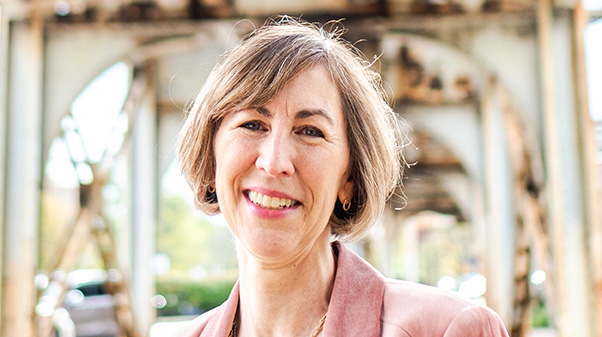Developing a consulting mindset as a leader

Leadership development consultant Carol Fitzgibbons teaches in the MBA program.
"A consulting mindset is all about solving business problems so they stay solved," says Carol Fitzgibbons, a leadership development consultant, coach, and instructor in the Next Generation MBA program at Loyola University Chicago's Quinlan School of Business.
"Too often, leaders tackle a big business challenge only to see that the issue reemerges or the solution doesn't have lasting impact. This wastes effort, hurts morale, and damages the leader's reputation."
Below, Fitzgibbons shares how leaders can develop a consulting mindset and deliver even better results.
Take time to frame the challenge
To truly solve a business challenge, leaders must identify its root cause, says Fitzgibbons. This takes time, patience, and curiosity. It also takes humility and courage to admit you don't have all the answers, resist the pressure to move too quickly, and quell your own fear of looking incompetent or stepping on toes.
"This can be hard because speed, expertise, and innovation are key drivers of business and career success," adds Fitzgibbons. "Most leaders got to where they are by being an expert who can quickly come up with new ideas. It's their mode of operating, and they're under a lot of pressure to keep doing that."
A consulting mindset moves leaders beyond a bias for action and toward thinking more deeply about business challenges. This is how leaders solve for the long-term instead of implementing expedient short-term solutions that may not have a real impact.
Look at the business challenge from every possible angle
Leaders should approach a challenge with many lenses, says Fitzgibbons. A strategic lens prompts questions on how the challenge connects with the business strategy and goals, mission, and values. A systems-thinking lens helps leaders consider both technical and human dimensions, as well as the impacts on other parts of the organization and the broader ecosystem where the business operates.
This is also about looking for what's working, in addition to what's not working. A lot of times, the solution or part of the solution already exists in the company, says Fitzgibbons. It just needs to be uncovered and leveraged. Other times, a new idea is needed, so leaders need to look beyond their own view and set aside preconceived notions.
The consulting mindset means changing your perspective and asking questions from a place of curiosity. This is what helps leaders uncover the best implementable solutions.
Engage the right people in the right way
To create ownership and buy in for long-term change, leaders must be able to pull the right stakeholders into the conversation and build strong relationships with them. Stakeholders should include the "owners" of the solution, those who contribute to or influence the issue, and those who will be impacted by the solutions.
One key, says Fitzgibbons, is for leaders to commit to actively and authentically listening to stakeholder ideas and concerns. Another is to surface resistance to change and deal with it directly. This requires strong relationship building skills and executive presence.
With practice, leaders and aspiring leaders can develop the skill set and muscle memory needed to cultivate a consulting mindset, says Fitzgibbons. And once they do, the mindset can help them deliver better results, have a bigger impact, and excel in their careers.
Learn more
- Next Generation MBA
